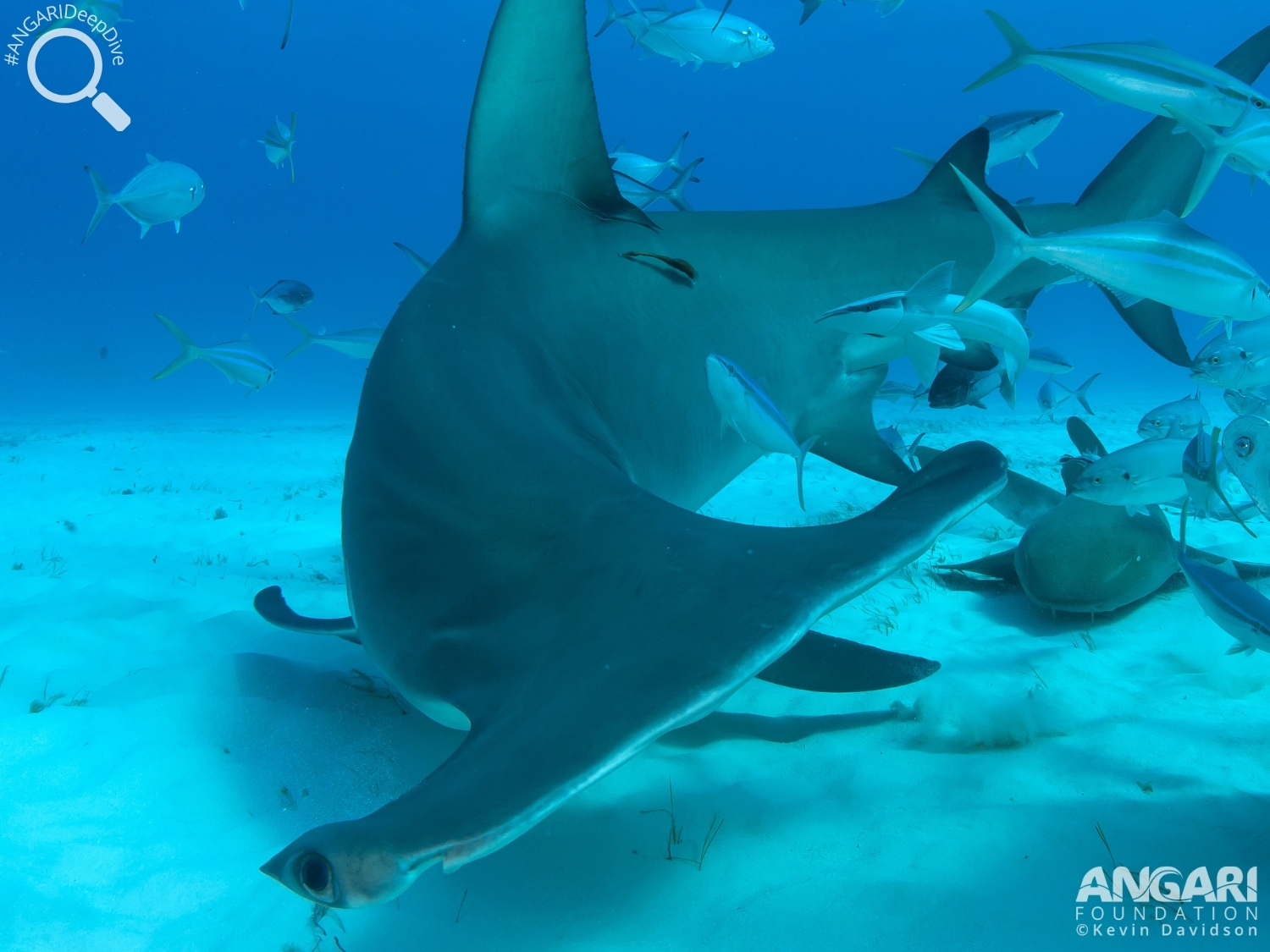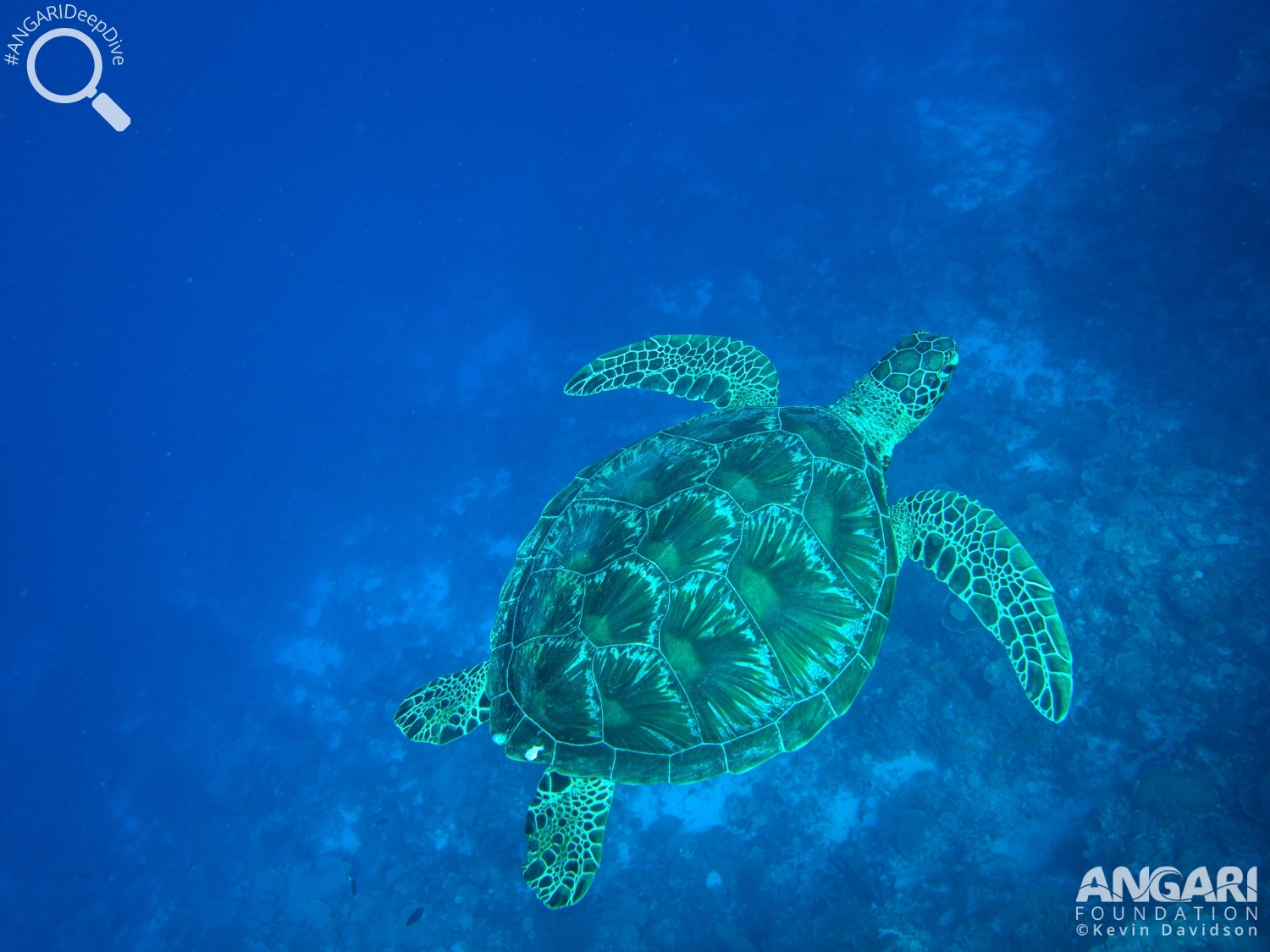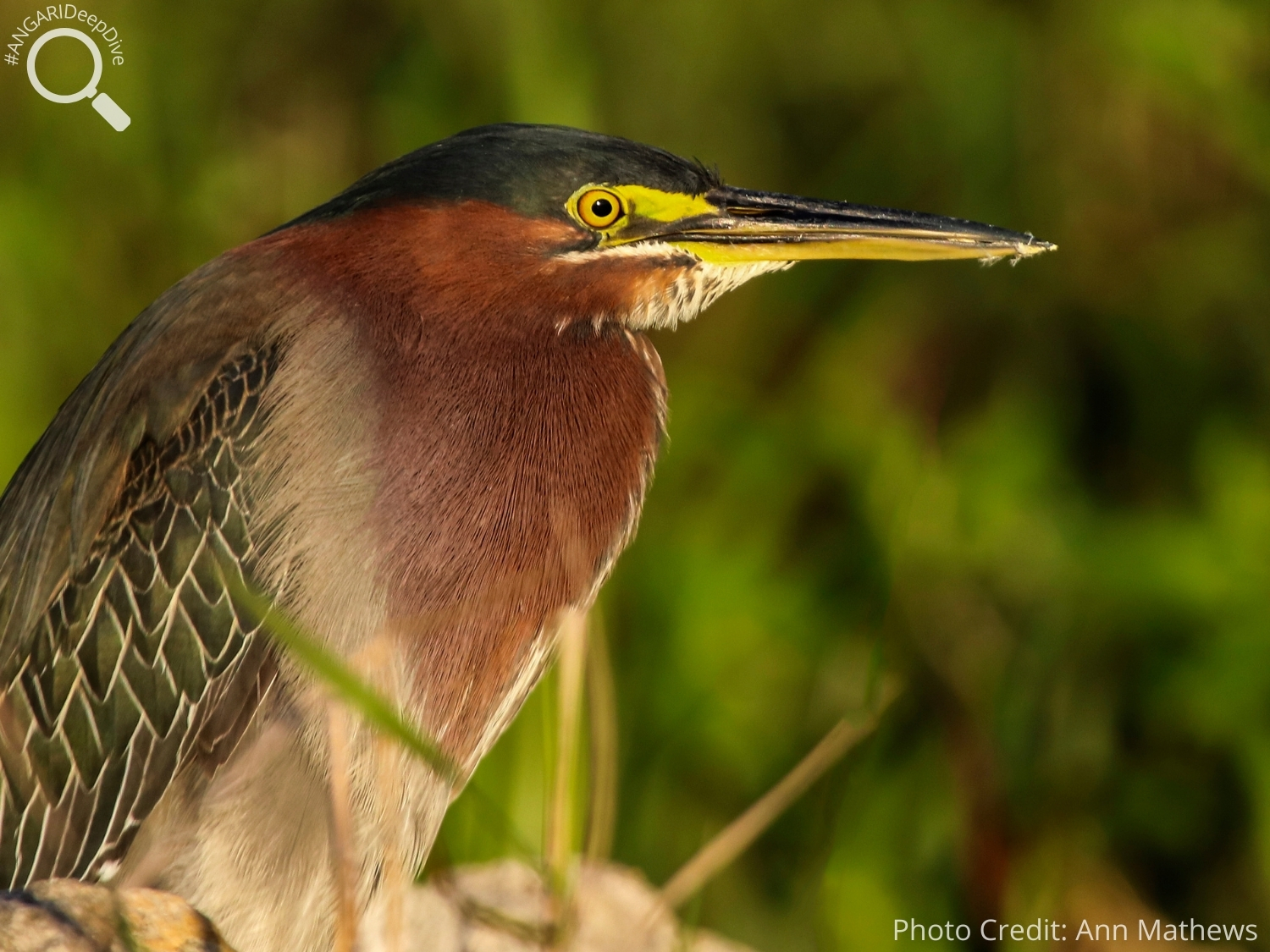The great hammerhead shark (Sphyrna mokarran) is an apex predator within the shark community and…
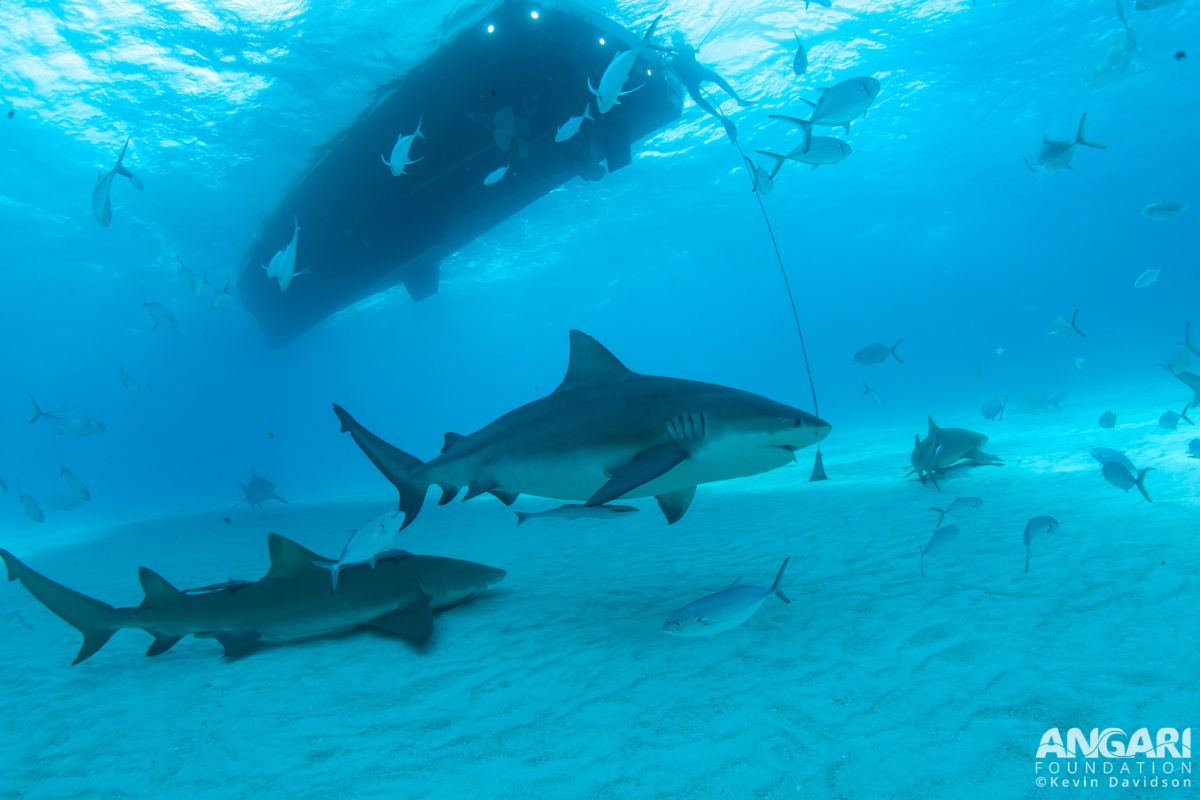
Bull Shark (Carcharhinus leucas)
The bull shark (Carcharhinus leucas) is a species of shark that has the unique ability to spend time in both marine and estuarine waters! Bull sharks do have a reputation for being an aggressive shark, and this stereotype may not paint this shark in its best light. So, let’s get to know the bull shark a bit better.
#1: Bull sharks are known by many names.
Bull sharks can be found worldwide in tropical to warm temperate waters, and where you are in the world will determine what they are called. Bull sharks are also known by the names Zambezi shark, Ganges River shark and Lake Nicaragua shark.
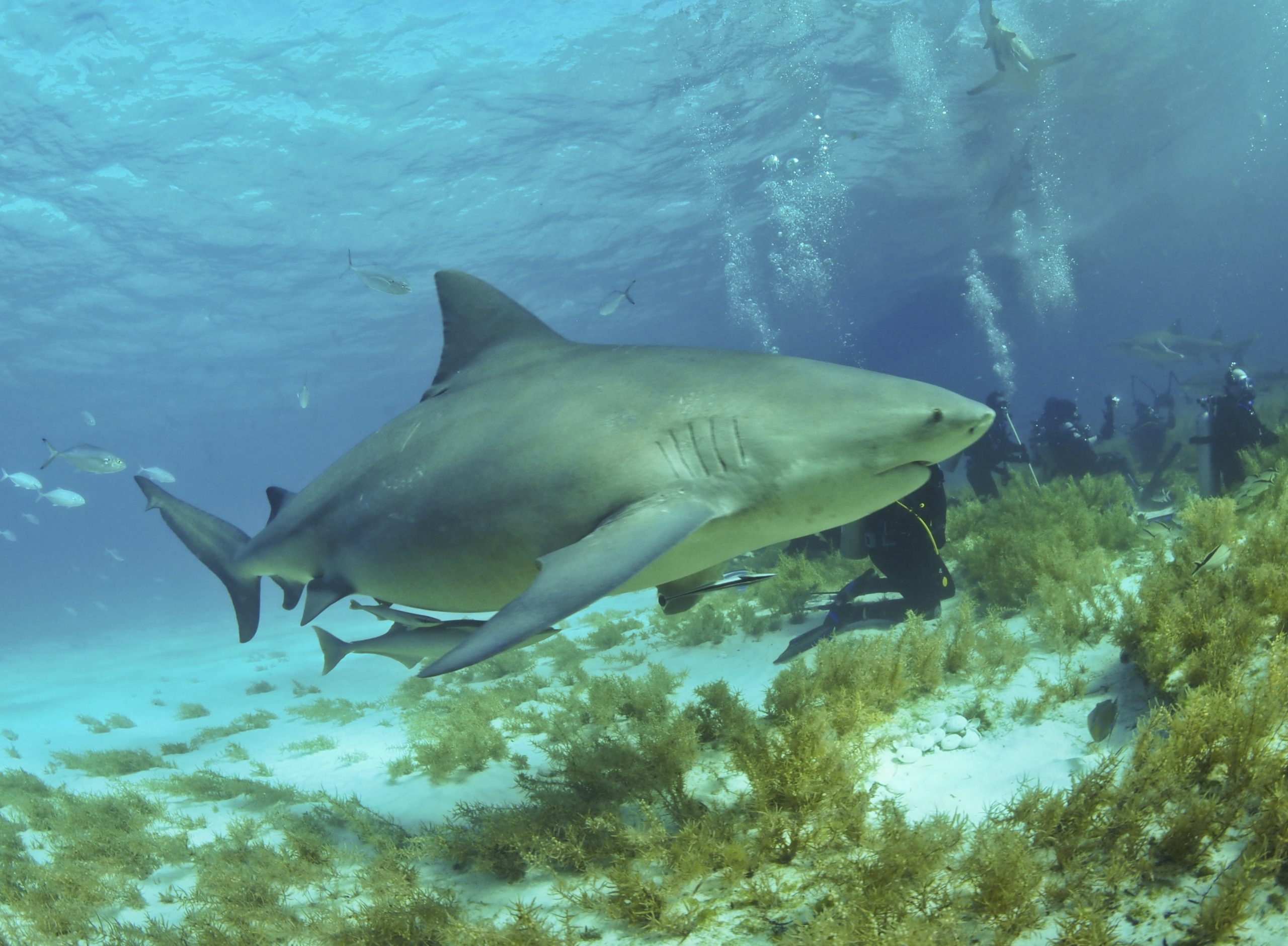
#2: Marine waters just aren’t enough for the bull shark.
Bull sharks are unique because they have the ability to not only spend time in marine waters but can also be found in freshwater and up rivers! They have specially designed glands and kidneys that help them retain salt, allowing them to spend time in freshwater.

#3: Bull sharks are listening.
Bull sharks have a good sense of hearing, most efficient at detecting frequencies between 400 to 600 hertz. Still, they have the ability to detect frequencies at a larger range than other sharks – between 100 and 1,500 hertz. This helps them “hear” prey over 1.6 km away.

#4: How do you identify a bull shark?
One way to identify a bull shark is through its snout. The snout of a bull shark is characteristically blunt compared to other species of sharks.

#5: Bull sharks are big and bulky!
When you look at a bull shark, you will see that they are far girthier and heavier than other shark species. Female bull sharks are, on average, larger than the male bull sharks. Average weights for a female bull shark is 111 kg and the average male weight is 95 kg, but it has been noted that weight and size of an individual is correlated to their geographical location.
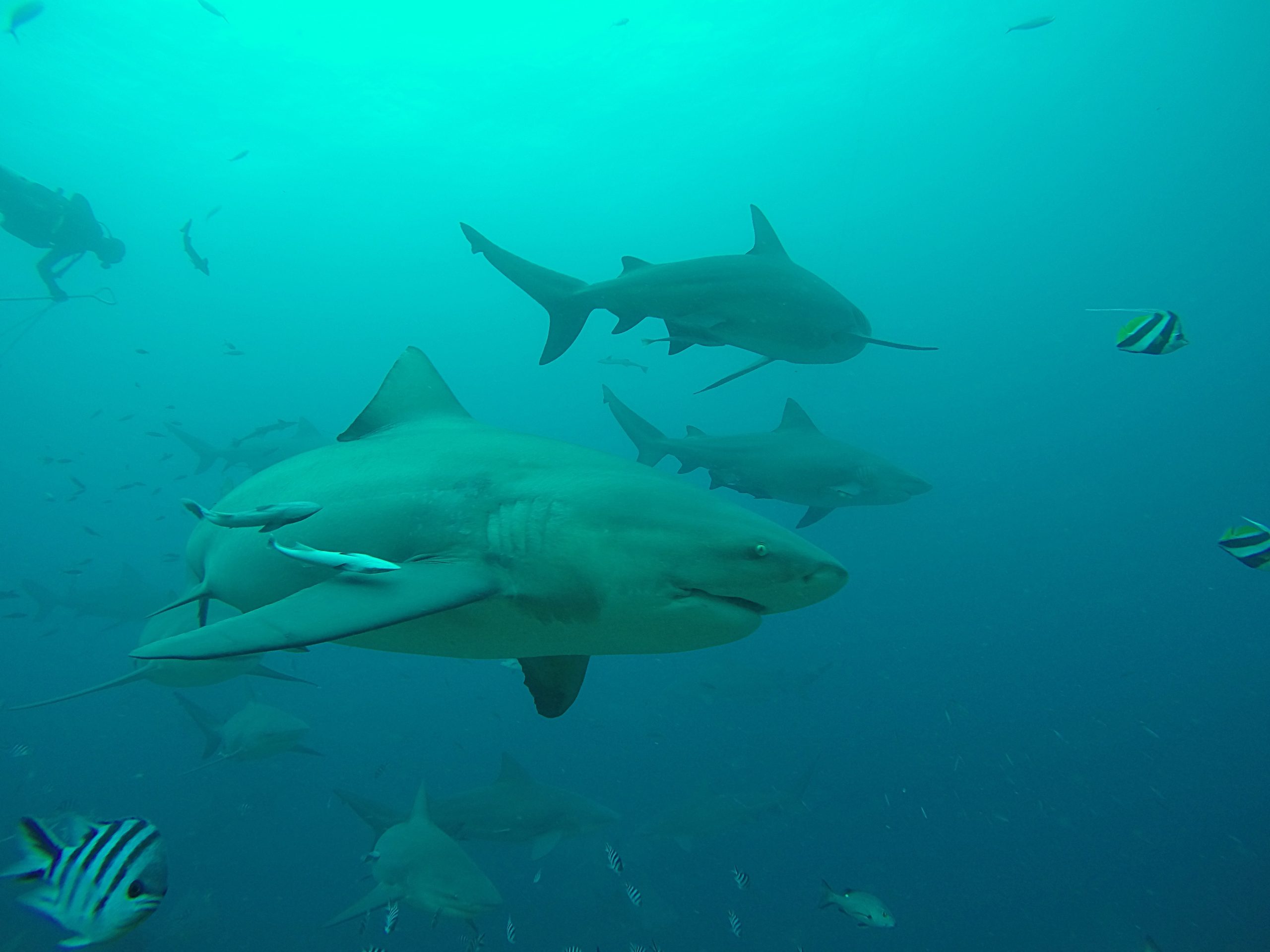
#6: Can you spot the bull shark?
Bull sharks use a camouflage technique called countershading. Countershading is when the animal has a darker color on the top of its body and lighter color on its underside. This allows them to blend into their surroundings from both above and below.
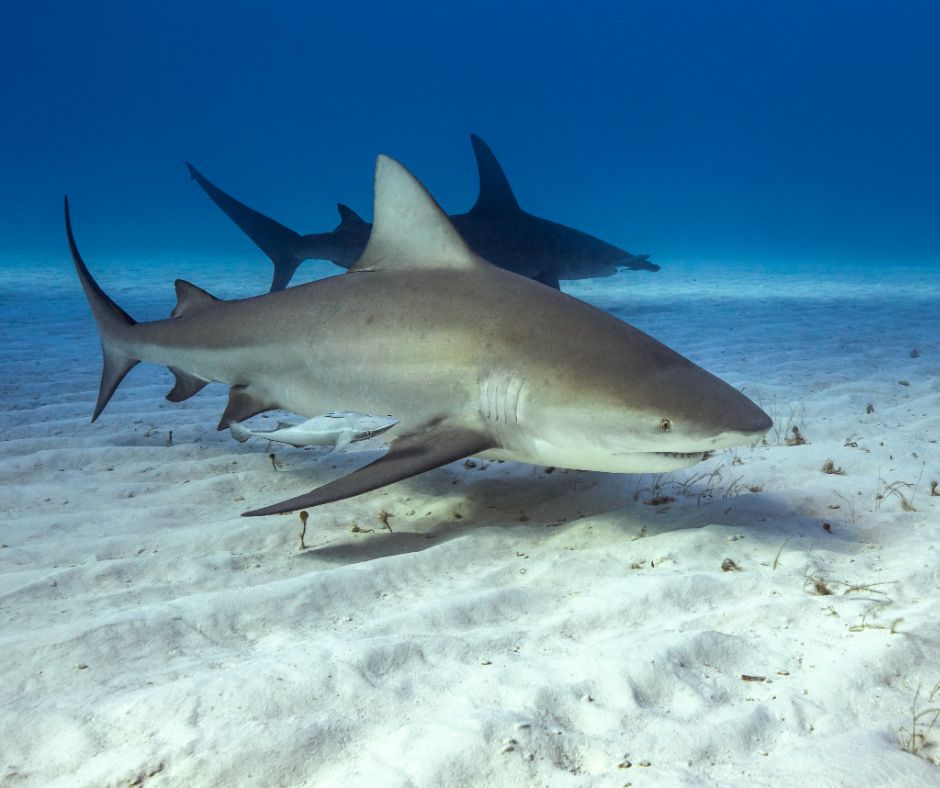
#7: What’s on the menu for a bull shark?
Bull sharks are opportunist hunters and feed on a variety of prey, including sea turtles, crustaceans, bony fish and many other marine animals. The bull shark is not a picky eater.

#8: Bull sharks birth live young.
A female bull shark gives birth to live young after 12 months of gestation. Normally the female bull shark will birth her pups in estuaries or bays, which gives them protection from the bigger predators found in the ocean.

#9: Are bull sharks social?
Bull sharks are normally a solitary species and only gather in groups to mate. However, there has been recent studies and research conducted that suggest this species may be a little more social than we originally thought.

Even though they are a top predator, bull sharks are a near threatened and vulnerable species. This is due to many reasons, including: their coastal distribution making them more vulnerable to pollution and habitat change; being targeted for their fins; and accidentally being caught as bycatch. Without sharks there would be a major disruption to the food chain, which can have drastic effects on the rest of the marine ecosystem. The more we educate ourselves and learn about these intriguing species, the easier it will be to coexist.
Additional Bull Shark Resources:
1. Bull shark 3D model
2. Bull Shark – The National Wildlife Federation
3. Bull Sharks, Carcharhinus leucas – MarineBio

